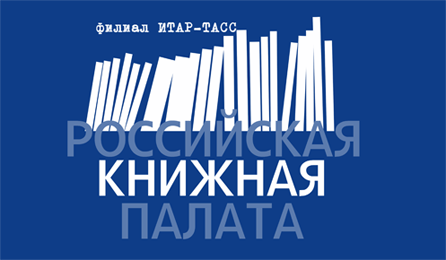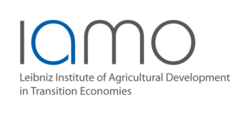Merl S. Reassessment of the Soviet agrarian policy in the light of today’s achievements // The Russian Peasant Studies. 2019. V.4. №1. P. 45-69.
DOI: 10.22394/2500-1809-2019-4-1-45-69
Annotation
Obvious successes of Putin’s policy require a reassessment of the Soviet agrarian policy. The article addresses the question of whether the Bolsheviks’ approach was appropriate for the Russian peasantry and considers limitations of the concept “socialist industrialized agriculture’. To assess achievements of the Soviet agriculture the author uses qualitative instead of quantitative criteria: per hectare yields and milk per cow since 1913. They kept to be extremely low which is striking for the agriculture based on large-scale and partly mechanized production. The gap in yields as compared to the neighboring capitalist countries even widened from 1930 to 1991. The strong and steady growth in yields since 2000 does not allow to explain failures of the Soviet agriculture by bad soils, specific climate or natural limitations—the Soviet agrarian policy is to blame. Instead of “revolutionizing”, socialist agriculture did not take part in any significant productivity rise as elsewhere in the world during the “green revolution”. The author argues that the main reason for such a failure was “infantilization” of agricultural producers—peasants, heads of state and collective farms—by a combination of mistrust and scrupulous control. During the Soviet period agricultural producers never were the masters of their fields. The situation became even worse after the planned economy provided agriculture with insufficient and ineffective machinery below Western standards. Although necessary machinery and knowledge of organizing the production were available in the West, in the Soviet Union the mechanization of crop production and animal husbandry was not completed. The article starts with the description of peasants’ interests, behavior und expectations in the Revolutions of 1905 and 1917– 1918; then the author focuses on the foundations of the Soviet agrarian policy suggested by Lenin and Stalin, continues with a short review of different approaches to agriculture developed by Khrushchev, Brezhnev und Gorbachev, and finishes with a summary of the reasons for Putin’s successes paying special attention to the short periods of yields growth—1924–1930, 1953–1958, 1965–1970, and 1986–1991.
Keywords
Socialist agriculture, agrarian policy, industrialized agriculture, infantilization of peasants, class differentiation, V.I. Lenin, J.V. Stalin, N.S. Khrushchev, L.I. Brezhnev, M.S. Gorbachev, V.V. Putin.
About the author
Merl Stephan, DSc (History), Professor, Bielefeld University; 25 Universitätsstr., 33615, Bielefeld, Germany.
E-mail: This email address is being protected from spambots. You need JavaScript enabled to view it.
Chayanov A.V. Letter from A.V. Chayanov to V.M. Molotov on the current state of agriculture in the USSR compared with its pre-war state and the situation in agriculture of capitalist countries (October 6, 1927) // The Russian Peasant Studies. 2018. V.3. №3. P. 6-18.
DOI: 10.22394/2500-1809-2018-3-3-6-18
Annotation
Alexander Chayanov wrote this analytical note to Vyacheslav Molotov in early October 1927 to discuss plans for the agricultural development of the first five-year plan in the USSR. Chayanov begins with a brief review of the history of world agriculture in the early twentieth century. He identifies two poles in this evolution: western (American — typically North America and partly South America, South Africa, and Australia) and eastern (Indian-Chinese, typically agrarian overpopulated countries). The American type of agricultural development is based on farms that use machinery and wage labor and are controlled by the vertical system of financial capitalism. The Indian-Chinese type of agricultural development is characterized by agrarian overpopulation of the peasantry under dominant pre-capitalist relations, exceptional labor intensity, and widespread bondage rent and credit. The rest of the world’s regions can be placed between these two poles. In the late nineteenth and early twentieth centuries, Russia is a paradoxical, complex mixture of these two types. Chayanov believed that in the agrarian science of pre-revolutionary and prewar Russia, these polarized agrarian worlds were reflected in the agrarian-economic disputes of the so-called “southerners” and “northerners” about the strategy of agricultural development. “Southerners” insisted on turning Russia into a “hundredpercent America” by the forced development of farmers’ agriculture. The “northerners” suggested supporting the regional strata of the middle peasantry and its own vertical cooperation to prevent the seizure of the village by trade and financial capital. Chayanov considered himself a “northerner”. He argued that the post-war, post-revolutionary village has changed significantly. First, the younger generation of peasants who had experienced the world war and Russian Revolution set the tone. Second, the Soviet agronomic science and cooperation of the 1920s contributed to the real progress of peasant farms. Soviet Russia has a unique chance to find a fundamentally new path of rural development, thus avoiding the Scylla of Americanfarmers’ dependence on financial capital and the Charybdis of the Indian-Chinese stagnation of peasant overpopulation. Instead of American vertical agrarian integration through the dominance of financial capital over farmers, Soviet vertical integration was to promote the development of diverse forms of peasant cooperation with the support of the socialist state. In the final part of the note, Chayanov considers the ratio of industry and agriculture in the first five-year plan and predicts a radical socialtechnological change under agricultural industrialization. The Soviet leadership ignored the ideas of this note: Stalin rejected Chayanov’s democratic type of vertical cooperation of the peasantry and preferred a horizontal type of cooperation in the form of collectivization. The publication with comments was prepared by A.M. Nikulin.
Keywords
Agrarian policy, peasants, farmers, agricultural cooperation, agrarian capitalism, socialist agriculture, ways of agricultural development.
About the authors
Chayanov Alexander V.
Editor: Nikulin Alexander M., PhD (Economics), Head of the Center for Agrarian Studies, Russian Presidential Academy of National Economy and Public Administration; 119571, Moscow, Prosp. Vernadskogo, 82.
E-mail: This email address is being protected from spambots. You need JavaScript enabled to view it.
Translator: Trotsuk Irina V., DSc (Sociology), Senior Researcher, Center for Agrarian Studies, Russian Presidential Academy of National Economy and Public Administration; Professor, Sociology Chair, RUDN University. Prosp. Vernadskogo, 82, Moscow, Russian Federation, 119571.
E-mail: This email address is being protected from spambots. You need JavaScript enabled to view it.





















